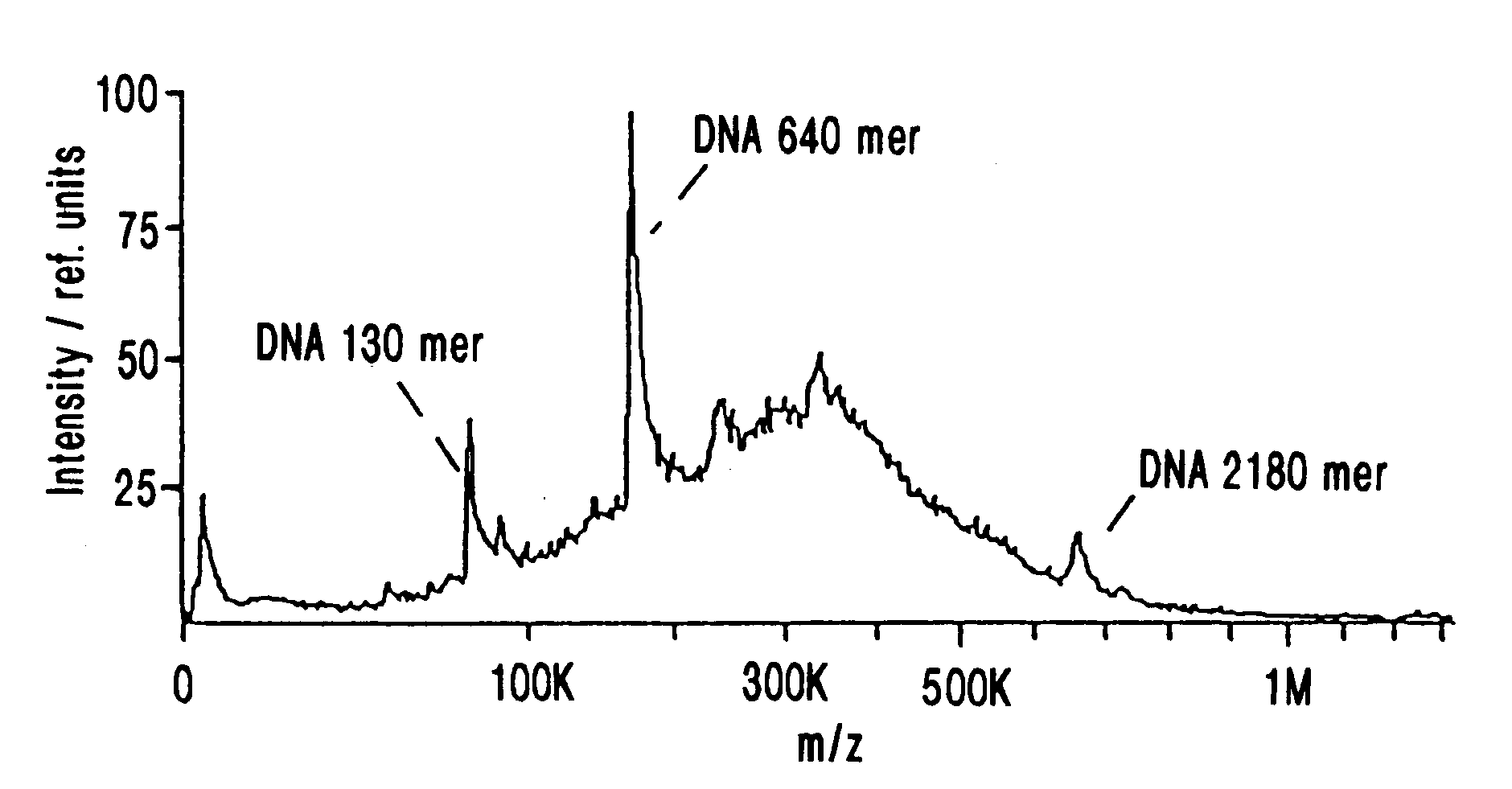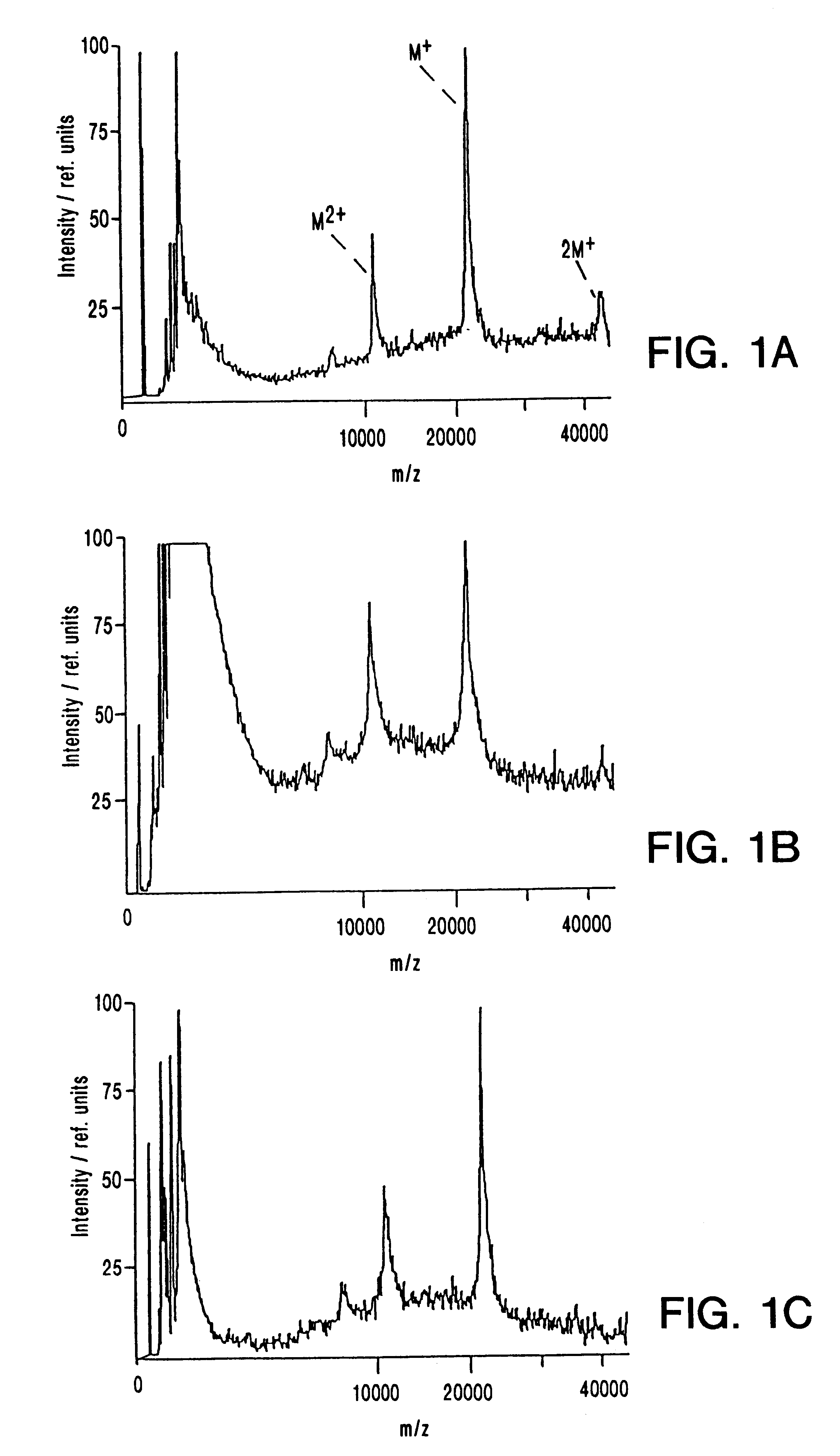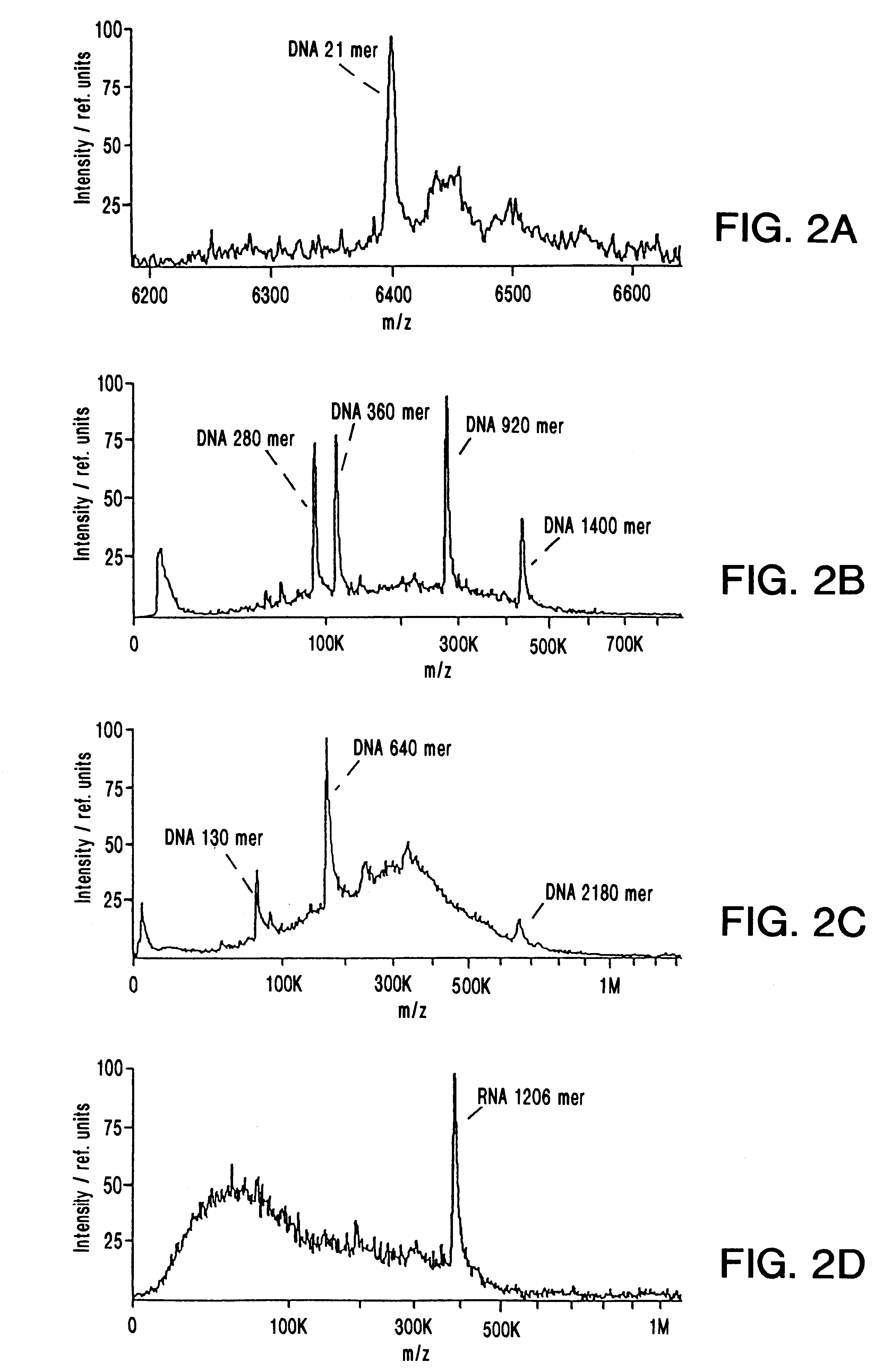IR-MALDI mass spectrometry of nucleic acids using liquid matrices
a mass spectrometry and nucleic acid technology, applied in the direction of instruments, particle separator tube details, separation processes, etc., can solve the problem of difficult nucleic acid analysis exceeding 30 kda in mass (i.e. ca. a 100mer) by uv-maldi-ms, and the mass limit is too high for clear and accurate resolution, so as to achieve rapid and accurate determination of the mass of nucleic acids
- Summary
- Abstract
- Description
- Claims
- Application Information
AI Technical Summary
Benefits of technology
Problems solved by technology
Method used
Image
Examples
example 1
MALDI Mass Spectrometry of Nucleic Acids Ranging From a 70-mer to a 2180-mer
Materials and Methods
Samples
Synthetic oligodeoxynucleotides were obtained from Pharmacia Biotech (Uppsala, Sweden). The 70-mer was FPLC-purified by the supplier, while the smaller ones were used without additional purification. Plasmid DNA was purified from the E. coli strain DH5a by use of the Qiagen midiprep kit (QIAGEN GmbH, Hilden, Germany) according to the manufactures recommendations. Restriction enzymes were obtained from New England Biolabs GmbH (Schwalbach / Taunus, Germany); restriction enzyme digests of plasmid DNA were performed according to the supplier's protocols. Samples intended for MALDI-MS analysis were adjusted to 10 mM EDTA and 2 M NH.sub.4 -acetate, and precipitated with 2 volumes of ethanol. The pellet was washed once with 70% ethanol and dissolved in water to an approximate concentration of 0.5 pmol / .mu.L.
The 1206 nucleotide in vitro transcript was synthesized and ethanol precipitated a...
example 2
Performance of IR Matrix-Assisted Laser Desorption / Ionization Mass Spectrometry
The performance characteristics of two lasers emitting in the mid infrared, an Er-YAG (2.94 .mu.m wavelength, 80-90 ms pulse width), and an Er-YSGG infrared laser (2.79 .mu.m wavelength, 80 ns pulse width), in matrix-assisted laser desorption / lionization mass spectrometry (IR-MALDI-MS) of biological macromolecules, was studied. Glycerol and succinic acid were used as matrices. In IR-MALDI sample consumption per laser shot typically exceeds that of UV-MALDI by about two orders of magnitude. Using glycerol as matrix, the reproducibility of the ion signals from shot to shot is comparable to the best values achieved in UV-MALDI. The same holds true for the precision and accuracy of the mass determination. For succinic acid all these values are significantly worse, due to the strong sample heterogeneity as typically found in dried droplet preparations. Metastable fragmentation is comparable for UV- and IR-MALD...
PUM
| Property | Measurement | Unit |
|---|---|---|
| Fraction | aaaaa | aaaaa |
| Angle | aaaaa | aaaaa |
| Temperature | aaaaa | aaaaa |
Abstract
Description
Claims
Application Information
 Login to View More
Login to View More - R&D
- Intellectual Property
- Life Sciences
- Materials
- Tech Scout
- Unparalleled Data Quality
- Higher Quality Content
- 60% Fewer Hallucinations
Browse by: Latest US Patents, China's latest patents, Technical Efficacy Thesaurus, Application Domain, Technology Topic, Popular Technical Reports.
© 2025 PatSnap. All rights reserved.Legal|Privacy policy|Modern Slavery Act Transparency Statement|Sitemap|About US| Contact US: help@patsnap.com



